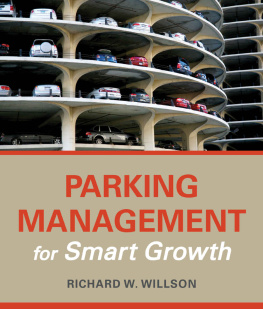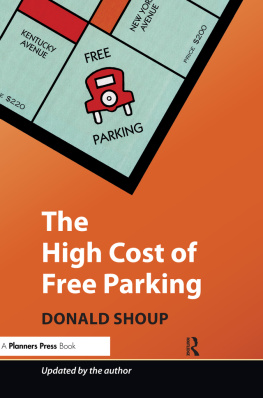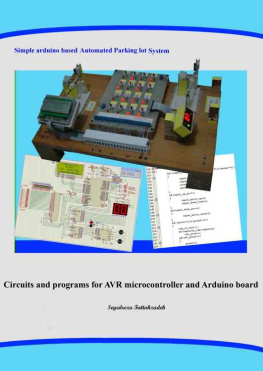About Island Press
Since 1984, the nonprofit organization Island Press has been stimulating, shaping, and communicating ideas that are essential for solving environmental problems worldwide. With more than 800 titles in print and some 40 new releases each year, we are the nations leading publisher on environmental issues. We identify innovative thinkers and emerging trends in the environmental field. We work with world-renowned experts and authors to develop cross-disciplinary solutions to environmental challenges.
Island Press designs and executes educational campaigns in conjunction with our authors to communicate their critical messages in print, in person, and online using the latest technologies, innovative programs, and the media. Our goal is to reach targeted audiencesscientists, policymakers, environmental advocates, urban planners, the media, and concerned citizenswith information that can be used to create the framework for long-term ecological health and human well-being.
Island Press gratefully acknowledges major support of our work by The Agua Fund, The Andrew W. Mellon Foundation, Betsy & Jesse Fink Foundation, The Bobolink Foundation, The Curtis and Edith Munson Foundation, Forrest C. and Frances H. Lattner Foundation, G.O. Forward Fund of the Saint Paul Foundation, Gordon and Betty Moore Foundation, The JPB Foundation, The Kresge Foundation, The Margaret A. Cargill Foundation, New Mexico Water Initiative, a project of Hanuman Foundation, The Overbrook Foundation, The S.D. Bechtel, Jr. Foundation, The Summit Charitable Foundation, Inc., V. Kann Rasmussen Foundation, The Wallace Alexander Gerbode Foundation, and other generous supporters.
The opinions expressed in this book are those of the author(s) and do not necessarily reflect the views of our supporters.
PARKING MANAGEMENT FOR SMART GROWTH
RICHARD W. WILLSON

Washington | Covelo | London
Copyright 2015 Richard W. Willson
All rights reserved under International and Pan-American Copyright Conventions. No part of this book may be reproduced in any form or by any means without permission in writing from the publisher: Island Press, 1718 Connecticut Avenue NW, Suite 300, Washington, DC 20009
Island Press is a trademark of The Center for Resource Economics.
Library of Congress Control Number: 2014955500
Printed on recycled, acid-free paper 

Manufactured in the United States of America
10 9 8 7 6 5 4 3 2 1
Keywords: Community planning; curb parking; information technology; integrated parking management; maximum parking requirements; minimum parking requirements; mixed-use, transit-oriented development; multimodal transportation; off-street parking management; on-street parking management; parking best practices; parking demand management; parking reform; parking utilization; pricing parking; shared parking; sharing economy; strategic parking management
To Robin
CONTENTS
LIST OF FIGURES
LIST OF TABLES
ACKNOWLEDGMENTS
In 2013, I wrote Parking Reform Made Easy to make the case that planners should reform minimum parking requirements. That book provides a method to recommend revision or elimination of minimum parking requirements. In giving book talks, it became obvious that failures of parking management impede parking requirement reform. Parking management increases parking efficiency and solves unintended impacts of parking requirement reform, such as parking spillover. Without it, local officials have no answer to stakeholder worries about parking shortages even though the number of parking spaces in the United States outnumbers the number of vehicles by a factor of more than three. The purpose of this book, therefore, is to help planners, local officials, business groups, and parking operators develop state-of-the-art parking management strategies that release the stranglehold that parking has on development patterns. Parking Management for Smart Growth shows how to create a strategic parking management program that is comprehensive, coordinated, and supportive of local goals.
I am indebted to parking consultant Rick Williams, a parking expert based in Portland, Oregon, who wrote and provided advice on the other chapters. I have worked with Rick on many parking consulting assignments and have learned a great deal from his goodwill, knowledge, and experience. Also, I am grateful to the dozens of consulting clients over the past thirty years who have given me insight into what works and how to get it implemented.
My former professor Donald Shoup spurred my interest in parking policy and supervised my UCLA dissertation on the responsiveness of parking demand to price. We all owe a debt to him for his brilliant parking research and his landmark book, The High Cost of Free Parking. I also want to thank Cal Poly Pomona students, Matthew Diemer and Aiden Irish, who provided research, editing, and images for this book. Thanks also to Cal Poly Pomona alum and parking research collaborator Arianna Allahyar, who provided images and insightful comments on the draft. I am grateful to UCLA colleague Elizabeth Falletta, who offered valuable suggestions. Finally, I benefited from financial support for this project from the Research, Scholarship, and Creativity Activity program at Cal Poly Pomona.
I am thankful for my wife and fellow urban planner, Robin Scherr, who tolerated my distraction with this book and provided rich insights on economic development and city management perspectives as well as excellent editing suggestions. My children, Jenna and Maya, are still mystified by the role of parking in academic life but are tolerant and supportive.
Finally, I would like to thank my editor at Island Press, Heather Boyer, for her interest in the topic and her wise advice.
CHAPTER 1
Introduction: What Is a Parking Space Worth?
Parking can be a useful and user-friendly aspect of the land use and transportation system if it is treated as a valuable community asset. This book shows how to strategically manage parking resources and, in the process, make parking stakeholders happier and communities more sustainable and prosperous. In downtowns, the parking management agenda is to better use scarce and expensive parking resources with sophisticated shared parking arrangements, real-time parking guidance, and dynamic parking pricing. Parking management allows downtowns to reduce the total parking inventory while growing and prospering. In suburban areas, where parking is generously supplied, the parking management agenda is to introduce parking controls, parking pricing, and sharing arrangements so that current oversupplies of parking can be more fully used and also serve new development, slowing or stopping the growth of parking supply. Since the number of parking spaces in the United States exceeds the number of cars by a factor of more than three, strategic parking management can forestall building new parking for decades to come, saving the money and land for better uses, including parks, urban agriculture, child development centers, affordable housing, and tax-producing commercial spaces. Strategic parking management supports sustainable development.
On the surface (pun intended), the parking space is mundane. It sits passively, is often unsightly, and performs one functionstoring a vehicle. Worse, it is empty much of the time. Residential parking is underused during the day when people are at work, and workplace parking is underused in the evening when people are at home. Yet parking is a central issue in community development and a big part of the daily lives of city administrators, residents, employers, employees, and retailers. Disparate stakeholders who agree on nothing else unite in their dissatisfaction with parking. For many, a free parking space is a right, and it should be available directly in front of their destination. So, while the parking
Next page














